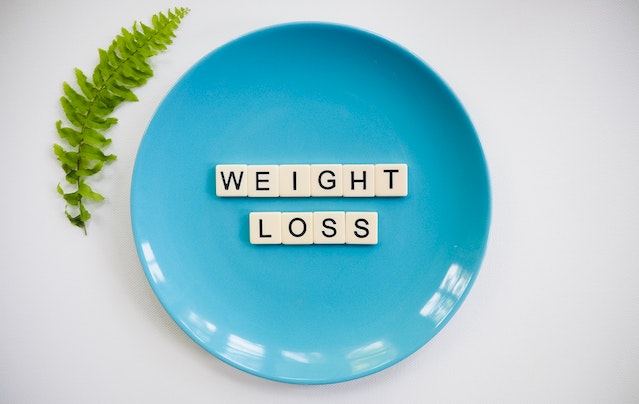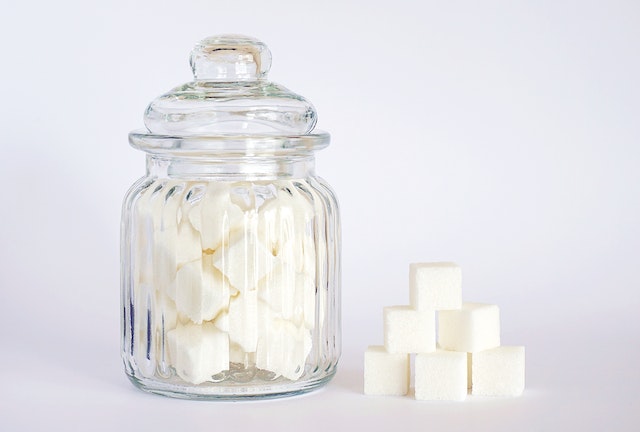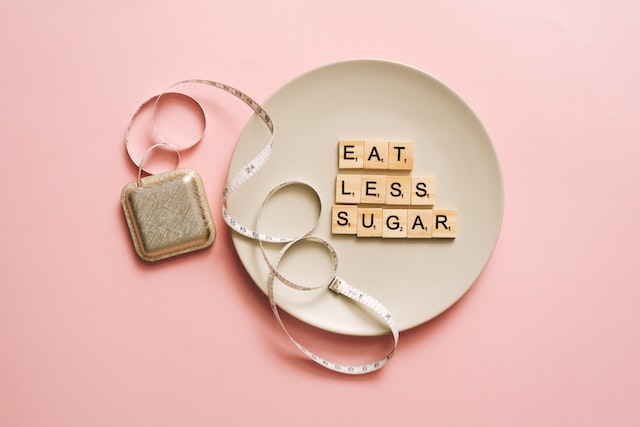How To Calculate Net Carbs – Keeping Your Hunger in Check
If you’re on a carb-restricted diet, such as Keto, you might want to learn how to calculate net carbs. Understanding net carbs lets you eat a larger variety of foods while still adhering to a low-carb diet. This will help you meet your blood sugar, weight loss, and health goals.
Of course, a good diet, along with the best exercise plans, will help you lose weight. Understanding how to calculate net carbs is the first step on Keto diets or if you have diabetes.
Losing weight and having more energy are two of the biggest benefits when you learn to calculate net carbs. So let’s delve into how to track your net carbs to drop weight, boost your energy and more!

What’s the Difference Between Net Carbs and Total Carbs?
Carbohydrates are a macronutrient that your body uses for energy. Nutrition labels break down carbs into the following components:
- Sugars, including glucose and fructose.
- Fiber.
- Sugar alcohol.
- Starches.
So, what’s the difference between net carbs and total carbs?
Your total carbs are every and any carbohydrates you’ve eaten. You calculate net carbs by subtracting fiber and sugar alcohols from your total carbohydrates. This results in your net carb count only including simple and complex carbs.
- Simple carbs are one or two sugar units linked together. You often find them in fruits, vegetables, milk, sugar, honey, and syrup.
- Complex carbs are in grains and starchy vegetables such as potatoes and include many sugar units linked together.
The enzymes in your small intestine break down food high in carbs. This leads to carbs breaking down into individual sugar units.
While some carbs cannot break down into individual sugars, others are only partially broken down and absorbed. fiber and sugar alcohols are examples of the former type of carbs.
As a result, when calculating net carbs, we look at the difference between total carbs and fiber and sugar alcohols.

Sugar Alcohols: Get the Energy To Take On the Day!
Before learning how to calculate net carbs, it is important to understand how manufacturers create their food. Food manufacturers often use sugar alcohols with a higher glycemic index.
According to studies, the small intestine absorbs 2-90% of sugar alcohol. Some of it is temporarily absorbed into the bloodstream before the body gets rid of it in urine. Scientifically, some sugar alcohols function differently than others and have varying effects. Individuals also vary in their ability to absorb and metabolize different types of sugar alcohols.
Sugar alcohols such as erythritol and xylitol have little to no effect on blood sugar levels. Allulose is a “rare sugar” rather than sugar alcohol, yet it does not affect blood glucose levels.
The glycemic index is a measurement of a food product’s impact on blood sugar. White sugar and simple carbs have a high glycemic index. Carb-containing foods with fiber or protein have a modest glycemic impact. Foods with very little or no net carbs have a low glycemic impact.
One of the most common sugar alcohols in processed foods is maltitol. You can find this in products such as low-carb protein bars and sugar-free sweets.
Maltitol is partially absorbed in the small intestine, while the colon ferments the rest with bacteria. Although some diabetics say that maltitol increases their blood sugar levels, it isn’t a scientifically proven claim.
Therefore, erythritol, a low-calorie sweetener, is the best overall regarding net carbs.
The small intestine absorbs the majority of net carbs. Your urine excretes the rest. The colon ferments the remaining 10% to SCFAs, making it carb-free, calorie-free, and unlikely to cause digestive issues. Best of all, it has no effect on blood glucose levels for diabetes.
How To Calculate Net Carbs: Keep Your Appetite Satisfied
Learn how to calculate net carbs with these two simple steps. As long as you memorize these formulas, you can satisfy your appetite without feeling guilty.
Step 1: Look at the Total Carb Content
Read the nutrition label and calculate the grams of total carbs, fiber, and sugar alcohols. The grams of total carbs indicated on the food product label are exactly that: total carbs.
Step 2: Subtract Dietary Fiber
Here’s how to calculate net carbs:
Total carbs – fiber – Sugar Alcohols = Net Carbs
Here’s how the formula works if we wanted to know how to calculate the net carbs of a large banana.
If the banana has 31 grams of total carbs and 3.5 grams of fiber, that means the banana has 27.5 grams of net carbs. (31g – 3.5g = 27.5g)
Here are the net carb values for some common fruits and vegetables:
- 100 g Cauliflower – 3 g of carbs
- 100 g Green beans – 4 g of carbs
- 125 g Tomato – 3.3 g of carbs
- 100 g Avocado – 2 g of carbs
- 100 g Brussels sprouts – 5 g of carbs
- 100 g Broccoli – 4 g of carbs
- 75 g Plum – 7.5 g of carbs
- 100 g Strawberries – 5.8 g of carbs

Net Carbs in Whole Foods: To Look the Best, Eat the Best!
Fiber is present in most whole meals. To calculate net carbs of a meal, simply subtract the fiber from the total carbs.
Total Carbs – Fibers = Net Carbs
A large avocado, for example, has 17.1 grams of total carbs, 13.5 grams of which are fiber. So 17.1 grammes total carbs minus 13.5 grams fiber equals 3.6 grams net carbs.
You can get carbs and fiber information for thousands of food products from the USDA Food Composition Databases.

How To Calculate Net Carbs Keto for Unparalleled Weight Loss
While the ketogenic (keto) diet is trending these days, many people don’t understand how it works. The keto diet’s main purpose is to put the body into ketosis. Ketosis helps burn down stored fats and aids in weight loss. But to induce ketosis, you must deprive your body of carbs so that it doesn’t have enough fast energy sources. Many great keto tools in the market help you maintain your diet.
There’s a very simple formula that you can memorize and use when you are on a keto diet:
Total Carbs – Fiber – Sugar Alcohols & Allulose = Net Carbs
Let’s see how to calculate net carbs keto-style with a keto pancake example. It contains 13 grams of total carbs, 9 grams of fiber, 2 grams of erythritol, and 1 gram of allulose.
This results in 1 gram of net carbs. (13g – 9g – 2g – 1g = 1g.)
How To Calculate Net Carbs on Labels
Understanding how to calculate net carbs on labels is important to keep your health in check.
Here are some examples of calculating net carbs from the information given.
Let’s use this randomly generated nutrition label designed just for checking carbs:

The two things you will be focusing on are Total carbs and Dietary Fiber. For this label, use the following equation to figure out the net carbs:
10 grams of Total carbs – 5 grams of Fiber = 5 grams of Net Carbs per serving.
This means a 50 g packet of the product contains 5 g of net carbs.
If a nutrition label has allulose and erythritol, subtract them with Fiber. But if the label mentions Sugar Alcohol, subtract half the number mentioned.
We have another example of how to calculate net carbs on labels with erythritol or allulose on it. The nutrition label below is for Whole Earth Monk Fruit With Erythritol.

Total Carbs – Erythritol = Net Carbs
8 g – 8 g = 0 g net carbs! Simple, right?
How To Calculate Net Carbs for Diabetes: Charge Your Appetite
Diabetes patients should closely monitor their carb intake. This is because their bodies can’t create enough insulin to keep blood sugar levels within a healthy range.
All food products have three major nutrients: carbs, protein and fat. You need all three to be healthy, but everyone requires a combination of those major nutrients in different quantities.
Try to choose complex carbs, which provide the most vitamins, minerals, and fiber. Complex carbs digest more slowly than refined carbs. As a result, they are less likely to increase blood sugar suddenly.
Unfortunately, nutrition labels don’t include the types of fiber or sugar alcohols. Therefore, we can’t preemptively assess their effect on blood glucose and potential insulin-resistant changes.
So, while eating meals high in fiber or sugar alcohol, use the total grams of carbs.
If you want to understand how to calculate net carbs for diabetes, here’s a quick solution.
For Type 1 diabetes with an insulin-to-carb ratio: Subtract half the fiber from total carbs if fiber is above 5g. Subtract all fiber from total carbs if it’s under 5g.
Here’s an example of how that would work:
Your food contains 20g total carbs and 6g fiber. You minus half the total fiber content from the total carb content. That means you minus 3g of fiber from 20g total carbs for 17g net carbs.
Alternatively, if your food contains 20g total carbs and 4g fiber, you minus 4g from 20g. The result is 16G net carbs.

Are Net Carbs Real?
Yes and no. Many people have differing opinions on whether to calculate net carbs or total carbs.
To begin with, many nutritionists don’t recognize or agree with the term “net carbs.” This is because they think the term “net carbs” causes confusion and misleads people. Most nutritionists prefer focusing on total carb intake (including fiber and sugars). They believe that all carbs affect blood sugar levels and so they should all be taken into consideration.
There’s also cause for concern about “net carbs” in regard to food manufacturers using it as a marketing tactic.
Moreover, calculating net carbs might be difficult due to conflicting information given on the nutrition labels. Some packaged goods may not correctly reflect the number of carbs absorbed by your body.
So, ‘Are net carbs real or not?’ is a question still up for debate. The main purpose here is to understand better the overall carbs you’re consuming.
The Benefits and Drawbacks of Calculating Net Carbs
As with every nutrition trend out there, calculating net carbs has its advantages and disadvantages. Here’s a rundown of the main pros and cons of calculating net carbs. This will give you a good indication of how to approach the process.
Pros of Calculating Net Carbs
- Less restrictive: Calculating net carbs may help you make more informed choices about when you consume carbs. Carbs can be a great source of fuel for workouts, especially if your diet tends to be mostly low-carb. Instead of eating unhealthy, you could eat carbs that fuel you up rather than just move through your body undigested.
- Lower risk of hypoglycemia in insulin users: Using insulin to cover all carbs without correcting for high-fiber and erythritol-containing diets can decrease blood sugar levels.

Cons of Learning How To Calculate Net Carbs
- Inaccurate results: Processed foods have different effects on fiber. Combining that with the sugar alcohols and individual responses, it isn’t possible to accurately calculate the effect of net carbs.
- Less effective for people with type 1 diabetes: Removing fiber carbs may only help some patients with type 1 diabetes avoid low blood sugar. Some people find that using a carb calculator makes blood sugar management easier. While for others, it can feel overwhelming and an unhelpful management tool.
- Excess eating of sugar-free snacks: Overindulging in “low in net carbs” bars could delay weight loss, raise your blood sugar, and cause other health problems. Be sure also to track your overall calories.

How To Calculate Net Carbs: Should You Fit It in Your Diet?
Low-carb diets are popular and can be effective in aiding weight reduction and increasing general health. But many carbs, particularly fruits, vegetables, and whole grains, are high in vitamins.
Some carbs are better for your body than others. Knowing the difference, as well as how many carbs to consume every day, can help your health.
Exercise is a great way to burn calories and lose weight. Tracking your net carbs can also be useful for helping you to lose weight. It’s just another tool you can use to promote weight loss.
Learning how to calculate net carbs makes you more aware of what you’re eating.
Calculating carbs can be useful for both beginners and more experienced dieters. Take the leap and try calculating net carbs the next time you eat something. You may find it gives you better insights into your food by finding things that you didn’t know were there.
Hopefully, the details throughout this post have been useful in helping you understand net carbs!


